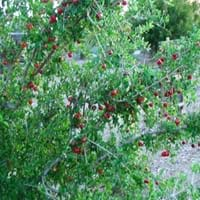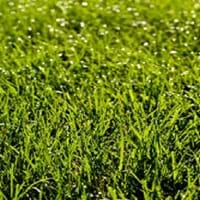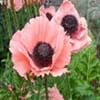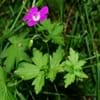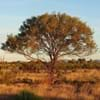Life Span
Annual and Perennial
Perennial
Origin
Central America, South America
Southern Asia, India
Types
Not Available
Not Available
Number of Varieties
Not Available
Habitat
Dry areas, Well Drained, Woodlands
Warmer regions
USDA Hardiness Zone
9-11
6-11
AHS Heat Zone
Not Available
11- 6
Sunset Zone
Not Available
H1, H2, 5, 6, 7, 8, 9, 10, 12, 13, 14, 15, 16, 17, 18, 19, 20, 21, 22, 23, 24
Habit
Thicket/Colonizing
Mat-forming
Flower Color
Pink
Not Available
Flower Color Modifier
Bicolor
Bicolor
Fruit Color
Red
Not Available
Leaf Color in Spring
Light Green, Gray Green
Gray Green, Dark Green
Leaf Color in Summer
Light Green, Gray Green
Light Green
Leaf Color in Fall
Light Green, Gray Green
Gray Green, Dark Green
Leaf Color in Winter
Green
Gray Green, Dark Green, Tan
Leaf Shape
Oval
Arrowhead
Plant Season
Spring, Summer
Spring, Summer, Fall, Winter
Sunlight
Full Sun
Full Sun
Type of Soil
Loam, Sand
Clay, Loam, Sand
The pH of Soil
Alkaline
Acidic, Neutral, Alkaline
Soil Drainage
Well drained
Well drained
Bloom Time
Spring, Summer
Indeterminate
Tolerances
Drought
Pollution, Salt, Soil Compaction
Where to Plant?
Container, Ground, Pot
Container, Ground
How to Plant?
Cuttings, Seedlings
Seedlings
Plant Maintenance
Medium
Medium
Watering Requirements
Average Water Needs, Do Not over Water, Requires regular watering
Average Water Needs
In Summer
Lots of watering
Lots of watering
In Spring
Moderate
Moderate
In Winter
Average Water
Average Water
Soil pH
Alkaline
Acidic, Neutral, Alkaline
Soil Type
Dry, Sandy
Clay, Loam, Sand
Soil Drainage Capacity
Well drained
Well drained
Sun Exposure
Full Sun
Full Sun
Pruning
In Early Autumn, Prune in winter, Remove branches, Remove damaged leaves, Remove dead branches, Remove dead leaves, Remove dead or diseased plant parts
No pruning needed
Fertilizers
Complete balanced fertilizer, iron-rich fertilizer
Apply 3-1-2 or 4-1-2 ratio, Nitrogen
Pests and Diseases
Aphids, Red blotch, Whiteflies
Red blotch
Plant Tolerance
Wind
Pollution, Salt, Soil Compaction
Flowers
Yes
Insignificant
Flower Petal Number
Single
Single
Foliage Texture
Medium
Fine
Foliage Sheen
Glossy
Matte
Attracts
Bees, Birds, Butterflies, pollinators
Flying insects, Insects
Allergy
Pollen
breathing problems, Eye irritation, Hives, Itchiness, Runny nose, sneezing, Throat itching, Whooping Cough
Aesthetic Uses
Showy Purposes
Ground Cover, Landscape Designing
Beauty Benefits
Good for skin
Skin irritation, Skin Problems
Edible Uses
Yes
Insignificant
Environmental Uses
Air purification, Food for birds, Nesting sites for birds, Windbreak
Air purification, Prevent Soil Erosion, soil stabilisation
Medicinal Uses
Antioxidants, Arthritis, Diarrhea, Dysentry, Fertility, Fever, Inflammation, Kidney problems, scurvy, Urinary tract problems, Vitamin C
Cures constipation, Cures foot fissures, Digestive disorders, Eliminate toxins, Fatigue, Halitosis, Improves Breast milk production, Increase red blood cells, Insomnia
Part of Plant Used
Flowers, Fruits, Leaves, Root
Leaves, Stem
Other Uses
Used As Food, Used as Ornamental plant, Used for making hedge
Animal Feed, Cattle Fodder, Used as Ornamental plant
Used As Indoor Plant
Yes
Insignificant
Used As Outdoor Plant
Yes
Yes
Garden Design
Rock Garden / Wall, Wildflower
Lawns and Turf
Botanical Name
Malpighia emarginata
CYNODON dactylon
Common Name
Barbados cherry, West Indian cherry and wild crepe myrtle
Bermuda Grass
In Hindi
Acerola Tree
बरमूडा घास
In German
Acerola Baum
Bermuda Gras
In French
Acerola Arbre
l'herbe des Bermudes
In Spanish
Árbol de acerola
Grama
In Greek
Acerola Δέντρο
Αγριάδα
In Portuguese
Árvore acerola
grama Bermuda
In Polish
Acerola Drzewo
Trawa Bermuda
In Latin
Acerola ligno
Bermuda Grass
Phylum
Not Available
Magnoliophyta
Class
Not Available
Liliopsida
Order
Malpighiales
Cyperales
Family
Malpighiaceae
Poaceae
Genus
Malpighia
Cynodon Rich
Clade
Angiosperms, Eudicots, Rosids
Angiosperms, Commelinids
Tribe
Not Available
Chlorideae
Subfamily
Not Available, Paperveroideae
Chloridoideae
Number of Species
Not Available
Season and Care of Acerola and Bermuda Grass
Season and care of Acerola and Bermuda Grass is important to know. While considering everything about Acerola and Bermuda Grass Care, growing season is an essential factor. Acerola season is Spring and Summer and Bermuda Grass season is Spring and Summer. The type of soil for Acerola is Loam, Sand and for Bermuda Grass is Clay, Loam, Sand while the PH of soil for Acerola is Alkaline and for Bermuda Grass is Acidic, Neutral, Alkaline.
Acerola and Bermuda Grass Physical Information
Acerola and Bermuda Grass physical information is very important for comparison. Acerola height is 457.20 cm and width 243.84 cm whereas Bermuda Grass height is 40.00 cm and width 302.00 cm. The color specification of Acerola and Bermuda Grass are as follows:
Acerola flower color: Pink
Acerola leaf color: Light Green and Gray Green
Bermuda Grass flower color: Not Available
- Bermuda Grass leaf color: Gray Green and Dark Green
Care of Acerola and Bermuda Grass
Care of Acerola and Bermuda Grass include pruning, fertilizers, watering etc. Acerola pruning is done In Early Autumn, Prune in winter, Remove branches, Remove damaged leaves, Remove dead branches, Remove dead leaves and Remove dead or diseased plant parts and Bermuda Grass pruning is done No pruning needed. In summer Acerola needs Lots of watering and in winter, it needs Average Water. Whereas, in summer Bermuda Grass needs Lots of watering and in winter, it needs Average Water.
